- Introduction
- Heliocentrism – The discovery that the sun is at the center of the solar system, not the Earth, revolutionized our understanding of the universe.
- Newton’s Laws of Motion – Isaac Newton’s laws of motion provided a foundation for modern physics and allowed for the development of engineering and technology.
- Evolution by Natural Selection – Charles Darwin’s theory of evolution by natural selection explained how living organisms change over time and revolutionized our understanding of biology.
- Germ Theory – The discovery that diseases are caused by microorganisms like bacteria and viruses transformed medicine and public health.
- Quantum Mechanics – The development of quantum mechanics revolutionized our understanding of physics and led to many modern technologies.
- Electricity – The discovery of electricity and the development of electrical technology have transformed the world, from lighting to communication to transportation.
- Relativity – Albert Einstein’s theories of relativity revolutionized our understanding of space, time, and gravity.
- DNA Structure – The discovery of the double helix structure of DNA laid the foundation for modern genetics and our understanding of heredity.
- Periodic Table – The development of the periodic table of elements organized our understanding of the natural world and provided a basis for modern chemistry.
- Penicillin – The discovery of penicillin and other antibiotics transformed medicine and saved countless lives.
- Plate Tectonics – The theory of plate tectonics explained the movement of the Earth’s continents and revolutionized our understanding of geology.
- Atomic Bomb – The development of the atomic bomb during World War II led to the nuclear age and changed international politics and warfare.
- Vaccination – The development of vaccines has saved countless lives and eradicated many deadly diseases.
- MRI – The development of magnetic resonance imaging (MRI) transformed medical imaging and diagnosis.
- Universal Gravitation – Isaac Newton’s theory of universal gravitation explained the motion of celestial bodies and revolutionized our understanding of astronomy.
- The Big Bang – The discovery of the Big Bang theory explained the origins of the universe and led to many modern cosmological theories.
- Genetics – The study of genetics has led to many advances in medicine, agriculture, and biotechnology.
- Green Revolution – The development of new agricultural technologies and crop varieties led to the Green Revolution, which transformed global food production.
- Artificial Intelligence – The development of artificial intelligence and machine learning is transforming many fields, from finance to medicine to transportation.
- Climate Change – The discovery of anthropogenic climate change has transformed our understanding of the Earth’s environment and led to many efforts to reduce greenhouse gas emissions and combat global warming.
- Conclusion
- Keywords
Introduction
Throughout history, science has been the driving force behind some of the most significant changes in the world. From the discovery of electricity to the development of quantum mechanics, scientific breakthroughs have revolutionized our understanding of the universe and transformed the way we live our lives. In this article, we will explore the 20 scientific discoveries that changed the world, from the laws of motion to the structure of DNA. Each of these discoveries has played a critical role in shaping the world we live in today.
Heliocentrism – The discovery that the sun is at the center of the solar system, not the Earth, revolutionized our understanding of the universe.

For centuries, people believed that the Earth was the center of the universe. It wasn’t until the 16th century that a revolutionary idea emerged: the sun, not the Earth, was at the center of the solar system. This idea, known as heliocentrism, was a major turning point in the history of science, and it transformed our understanding of the universe.
The idea of heliocentrism had been proposed by a number of ancient Greek philosophers, including Aristarchus of Samos. However, it wasn’t until the 16th century that a serious challenge to the geocentric model of the universe was mounted. In 1543, the Polish astronomer Nicolaus Copernicus published a book called “On the Revolutions of the Celestial Spheres” in which he presented a heliocentric model of the universe. According to Copernicus, the sun was at the center of the solar system, and the planets orbited around it in circular paths.
Copernicus’s ideas were not immediately accepted, and many people were deeply attached to the geocentric model of the universe. However, over time, more and more evidence began to accumulate in support of heliocentrism. One of the most significant pieces of evidence came from the observations of the Italian astronomer Galileo Galilei, who used a telescope to observe the moons of Jupiter. Galileo’s observations showed that the moons of Jupiter orbited around Jupiter, not the Earth, which was a powerful demonstration of the fact that not everything in the universe revolved around the Earth.
Despite the mounting evidence in support of heliocentrism, it took some time for the new model of the universe to gain acceptance. The Catholic Church, in particular, was resistant to the idea, as it challenged the traditional teachings of the church. In 1616, the Catholic Church banned the idea of heliocentrism, and Copernicus’s book was placed on the Index of Forbidden Books. Galileo was later tried by the Inquisition for his support of heliocentrism and was placed under house arrest for the rest of his life.
Despite the resistance it faced, heliocentrism eventually became the accepted model of the universe. Today, we know that the sun is at the center of the solar system, and the planets orbit around it in elliptical paths. This model has been supported by a wealth of evidence, including observations of the motions of the planets, the behavior of comets, and the study of the cosmic microwave background radiation.
The discovery of heliocentrism was a major turning point in the history of science. It challenged traditional ideas about the universe and revolutionized our understanding of our place in it. Today, we continue to build on the work of Copernicus, Galileo, and other pioneers of heliocentrism, exploring the mysteries of the universe and pushing the boundaries of human knowledge.
Newton’s Laws of Motion – Isaac Newton’s laws of motion provided a foundation for modern physics and allowed for the development of engineering and technology

Isaac Newton’s laws of motion are some of the most important and influential concepts in the history of science. These laws describe the behavior of objects in motion and provide a foundation for modern physics. They also played a crucial role in the development of engineering and technology.
Newton’s first law of motion states that an object at rest will remain at rest, and an object in motion will remain in motion, at a constant velocity, unless acted upon by an external force. This law describes the concept of inertia, which is the tendency of an object to resist changes in its motion. It also implies that force is necessary to change an object’s motion.
Newton’s second law of motion states that the force applied to an object is equal to the product of its mass and acceleration. This law provides a quantitative measure of force and is fundamental to the study of mechanics. It also allows for the calculation of the force required to produce a certain amount of acceleration.
Newton’s third law of motion states that for every action, there is an equal and opposite reaction. This law describes the relationship between two interacting objects and the forces they exert on each other. It is essential to understanding the behavior of systems with multiple interacting objects.
Together, Newton’s laws of motion provided a foundation for modern physics and allowed for the development of engineering and technology. These laws allowed engineers to calculate the forces required to move objects, build machines that could produce and control motion, and develop technologies like airplanes and automobiles.
For example, Newton’s laws of motion played a crucial role in the development of the steam engine. Engineers used the laws to calculate the amount of force required to move a piston and developed systems that could convert the motion of the piston into useful work. The steam engine revolutionized transportation, manufacturing, and other industries and paved the way for the development of modern technologies.
In addition to their practical applications, Newton’s laws of motion also had a profound impact on our understanding of the universe. They provided a framework for understanding the behavior of celestial bodies and allowed scientists to make accurate predictions about the motion of planets and other objects in space.
Overall, Isaac Newton’s laws of motion are one of the most important and influential concepts in the history of science. They provided a foundation for modern physics and allowed for the development of engineering and technology. Today, these laws continue to play a crucial role in our understanding of the universe and the technologies we rely on every day.
Evolution by Natural Selection – Charles Darwin’s theory of evolution by natural selection explained how living organisms change over time and revolutionized our understanding of biology
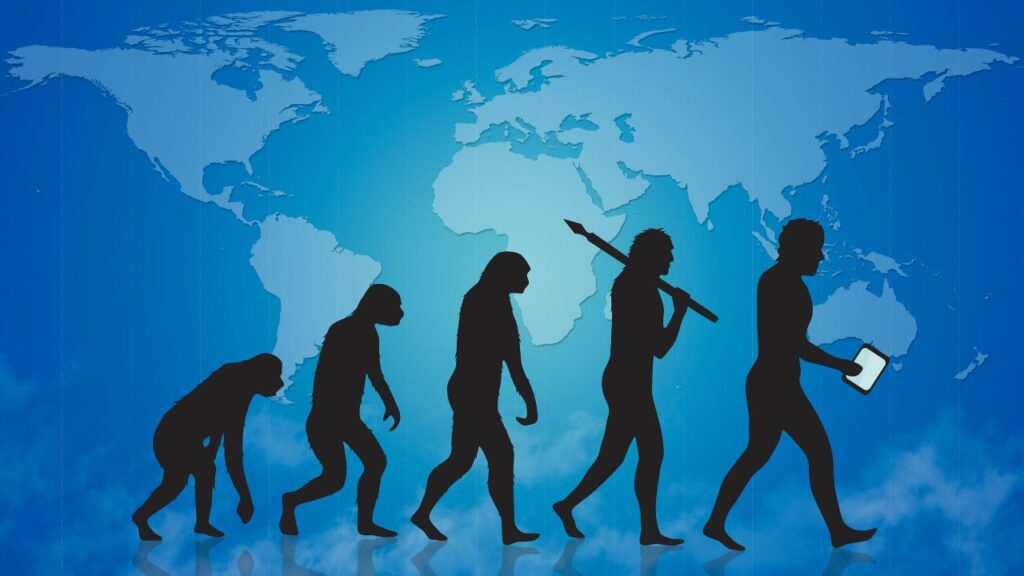
Charles Darwin’s theory of evolution by natural selection is one of the most important and influential ideas in the history of science. This theory explains how living organisms change over time and how new species emerge through a process of natural selection. Darwin’s theory of evolution revolutionized our understanding of biology and provided a foundation for the study of life on Earth.
Darwin’s theory of evolution by natural selection is based on the idea that living organisms are subject to variations or differences in traits. Some of these variations may be beneficial, allowing the organism to survive and reproduce more effectively in its environment. Over time, these advantageous traits become more common in the population, as organisms with these traits are more likely to survive and pass on their genes to their offspring.
The process of natural selection can lead to the formation of new species, as populations of organisms become isolated from each other and begin to diverge in their traits. This can lead to the development of new species that are better adapted to their environments.
Darwin’s theory of evolution by natural selection was a major departure from traditional ideas about the origin of species. Prior to Darwin, most scientists believed that species were created in their current form by a divine creator. Darwin’s theory challenged this idea and provided a naturalistic explanation for the diversity of life on Earth.
Darwin’s theory of evolution has been supported by a wealth of evidence, including the fossil record, comparative anatomy, and molecular biology. The fossil record shows the gradual changes in organisms over time, while comparative anatomy provides evidence for the evolution of structures with different functions from a common ancestor. Molecular biology has also revealed the relationships between different species based on their genetic code, providing further evidence for the evolution of species.
Darwin’s theory of evolution by natural selection has had a profound impact on our understanding of biology and the natural world. It has provided a framework for understanding the diversity of life on Earth and has led to many important discoveries in genetics, ecology, and other fields. It has also led to many practical applications, such as the development of new agricultural technologies and the understanding of the evolution of disease-causing organisms.
In conclusion, Charles Darwin’s theory of evolution by natural selection is one of the most important and influential ideas in the history of science. This theory has revolutionized our understanding of biology and the natural world and has led to many important discoveries and practical applications. Today, we continue to build on Darwin’s legacy, exploring the mysteries of life on Earth and pushing the boundaries of human knowledge.
Germ Theory – The discovery that diseases are caused by microorganisms like bacteria and viruses transformed medicine and public health
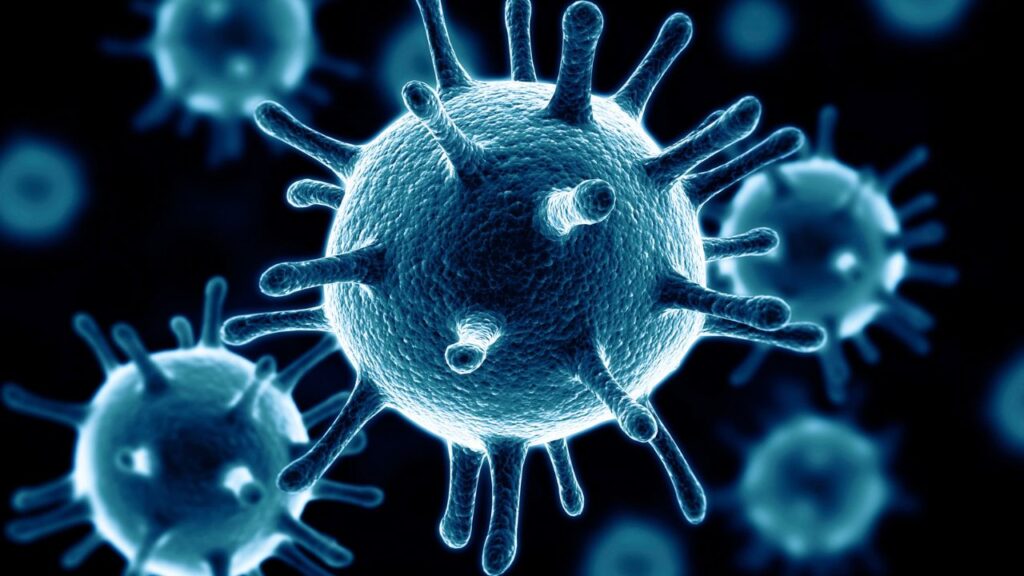
For much of human history, people believed that diseases were caused by supernatural forces, bad air, or other non-scientific explanations. It wasn’t until the late 19th century that the germ theory of disease emerged, which revolutionized our understanding of medicine and public health. This theory stated that diseases were caused by microorganisms like bacteria and viruses, and it provided a foundation for modern medical practice.
The germ theory of disease was developed by a number of scientists in the late 19th century, including Louis Pasteur, Robert Koch, and Joseph Lister. These scientists conducted experiments and made observations that demonstrated the role of microorganisms in causing diseases. They showed that infectious diseases like cholera, tuberculosis, and smallpox were caused by bacteria and viruses, and they developed techniques for preventing and treating these diseases.
One of the key discoveries of the germ theory was that diseases were caused by specific microorganisms. This allowed scientists to identify the specific pathogens responsible for different diseases and develop targeted treatments and vaccines. For example, the development of vaccines for diseases like smallpox, polio, and measles has saved countless lives and prevented the spread of these deadly diseases.
The germ theory also led to the development of new hygiene practices, such as hand washing and sterilization, which have become standard in modern medicine. These practices have reduced the spread of infectious diseases and have led to significant improvements in public health.
The impact of the germ theory of disease can be seen in the decline of mortality rates from infectious diseases in the 20th century. Prior to the discovery of germ theory, infectious diseases were a major cause of death, particularly in urban areas. However, the development of vaccines, antibiotics, and other treatments based on the germ theory has dramatically reduced the incidence and severity of infectious diseases.
Despite the significant advances made in medicine and public health as a result of the germ theory, there are still many challenges to be addressed. New diseases continue to emerge, and existing diseases are becoming more resistant to antibiotics and other treatments. However, the germ theory provides a framework for understanding the causes of these diseases and developing new treatments and preventive measures.
In conclusion, the discovery of the germ theory of disease transformed medicine and public health. This theory demonstrated that diseases are caused by microorganisms like bacteria and viruses, and it provided a foundation for targeted treatments, vaccines, and hygiene practices. Today, the germ theory continues to shape our understanding of infectious diseases and guide our efforts to prevent and treat them.
Quantum Mechanics – The development of quantum mechanics revolutionized our understanding of physics and led to many modern technologies

Quantum mechanics is one of the most revolutionary and fundamental fields of modern physics. It describes the behavior of particles on the atomic and subatomic scale and has led to many breakthroughs in technology, from transistors to lasers to medical imaging devices. Quantum mechanics has transformed our understanding of the universe and has opened up new possibilities for scientific discovery and technological innovation.
The development of quantum mechanics began in the early 20th century, with the work of scientists like Max Planck, Albert Einstein, and Niels Bohr. These scientists were trying to understand the behavior of light and matter on the atomic and subatomic level, where classical physics no longer applied. They discovered that particles like electrons and photons behaved like both waves and particles, and that their behavior was governed by probabilities rather than definite outcomes.
One of the key concepts in quantum mechanics is superposition, which states that a particle can exist in multiple states or locations simultaneously. This concept has led to the development of quantum computing, which takes advantage of the ability of particles to exist in multiple states to perform computations faster than classical computers.
Another important concept in quantum mechanics is entanglement, which describes the phenomenon where particles can become correlated in such a way that the state of one particle is dependent on the state of another, even if they are separated by great distances. This concept has led to the development of quantum cryptography, which uses the principles of quantum mechanics to create secure communication channels.
The development of quantum mechanics has also led to many practical applications in technology. For example, the development of the laser, which uses the principles of quantum mechanics to create a coherent beam of light, has revolutionized many fields, from telecommunications to medicine. Medical imaging technologies like magnetic resonance imaging (MRI) and positron emission tomography (PET) also rely on the principles of quantum mechanics.
In addition to its practical applications, quantum mechanics has transformed our understanding of the universe. It has led to the development of new theories of the behavior of matter and energy on the atomic and subatomic level, such as quantum electrodynamics and quantum field theory. These theories have allowed scientists to make accurate predictions about the behavior of particles and have led to many important discoveries, such as the discovery of the Higgs boson particle.
Overall, the development of quantum mechanics has revolutionized our understanding of physics and has led to many important technological and scientific breakthroughs. Today, quantum mechanics continues to be a field of active research and development, with the potential to transform many more areas of science and technology in the future.
Electricity – The discovery of electricity and the development of electrical technology have transformed the world, from lighting to communication to transportation

The discovery of electricity and the development of electrical technology have transformed the world in countless ways. From lighting to communication to transportation, electricity has become an essential part of modern life, and its impact can be felt in every corner of the globe.
The discovery of electricity can be traced back to the ancient Greeks, who discovered that rubbing fur on amber would cause it to attract lightweight objects like feathers. However, it wasn’t until the 18th and 19th centuries that scientists began to understand the nature of electricity and how it could be harnessed for practical use.
One of the key breakthroughs in the development of electrical technology was the invention of the battery by Alessandro Volta in 1800. This allowed for the storage of electrical energy and made it possible to use electricity for practical purposes. This was followed by the invention of the electric motor by Michael Faraday in 1821, which allowed for the conversion of electrical energy into mechanical energy.
The development of electrical technology has led to many practical applications, from lighting to communication to transportation. One of the earliest and most important uses of electricity was in lighting, with the invention of the incandescent light bulb by Thomas Edison in 1879. This allowed for the widespread adoption of electric lighting, which replaced the use of gas lamps and candles.
Electricity has also revolutionized communication, with the invention of the telegraph by Samuel Morse in 1837 and the telephone by Alexander Graham Bell in 1876. These inventions made it possible to communicate over long distances, and paved the way for modern telecommunications.
In transportation, the development of electric motors has led to the widespread adoption of electric vehicles, which are cleaner and more efficient than traditional gasoline-powered vehicles. Electric motors are also used in trains, elevators, and other forms of transportation.
The development of electrical technology has also had a profound impact on industry, allowing for the automation of manufacturing processes and the development of new materials and products. It has also led to the development of new technologies like computers and the internet, which have transformed the way we live and work.
Overall, the discovery of electricity and the development of electrical technology have transformed the world in countless ways. From lighting to communication to transportation, electricity has become an essential part of modern life, and its impact will continue to be felt for generations to come.
Relativity – Albert Einstein’s theories of relativity revolutionized our understanding of space, time, and gravity

Albert Einstein’s theories of relativity, first published in the early 20th century, revolutionized our understanding of space, time, and gravity. These theories challenged traditional notions of physics and opened up new avenues of research and discovery, from the study of black holes to the development of GPS technology.
Einstein’s theory of special relativity, published in 1905, fundamentally changed our understanding of space and time. The theory proposed that the speed of light is constant, regardless of the observer’s motion. This meant that time and space were not fixed and absolute, but rather were relative to the observer’s frame of reference. The theory also proposed that energy and mass were equivalent, and that the total amount of energy and mass in the universe was constant.
Einstein’s theory of general relativity, published in 1915, built on the ideas of special relativity and proposed a new understanding of gravity. According to general relativity, gravity is not a force between two objects, but rather a curvature of space-time caused by the presence of mass and energy. This theory explained many previously unexplained phenomena, such as the precession of Mercury’s orbit and the bending of starlight near massive objects.
The theories of relativity have led to many practical applications, from the development of nuclear energy to the study of black holes. The equations of relativity were used to develop the atomic bomb during World War II, and the principles of relativity are used in modern particle accelerators and other scientific instruments.
One of the most important applications of relativity is in the development of GPS technology. The GPS system relies on precise timing signals sent from satellites in orbit around the Earth. Because of the time dilation effects predicted by relativity, the clocks on the satellites must be adjusted to account for the different gravitational forces at their altitude compared to the Earth’s surface. Without the principles of relativity, the GPS system would not be accurate enough for many of its practical applications, such as navigation and surveying.
Overall, Albert Einstein’s theories of relativity revolutionized our understanding of space, time, and gravity. These theories challenged traditional notions of physics and opened up new avenues of research and discovery, leading to many practical applications and technological advancements. The principles of relativity continue to shape our understanding of the universe and guide our efforts to explore and understand it.
DNA Structure – The discovery of the double helix structure of DNA laid the foundation for modern genetics and our understanding of heredity
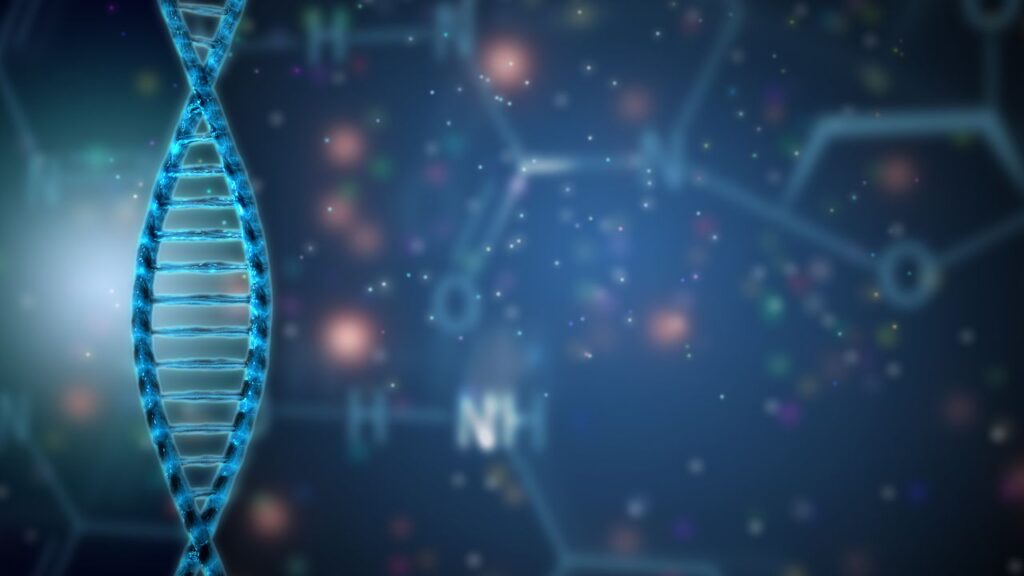
The discovery of the structure of DNA, the molecule that carries genetic information in living organisms, was a major breakthrough in the field of genetics. The discovery of the double helix structure of DNA by James Watson and Francis Crick in 1953 revolutionized our understanding of heredity and laid the foundation for modern genetics.
Prior to the discovery of the structure of DNA, scientists knew that genetic information was carried in cells, but they did not know how it was organized or transmitted. The discovery of the double helix structure of DNA provided a framework for understanding how genetic information is stored, transmitted, and expressed.
The double helix structure of DNA consists of two strands of nucleotides, each made up of a sugar, a phosphate group, and a nitrogenous base. The nitrogenous bases on each strand are complementary, with adenine pairing with thymine and guanine pairing with cytosine. This complementary base pairing allows for the accurate replication of DNA during cell division, ensuring that genetic information is passed on accurately from one generation to the next.
The discovery of the structure of DNA has had profound implications for many fields of science, from medicine to agriculture to biotechnology. The understanding of the structure of DNA has led to the development of techniques for manipulating and modifying DNA, such as genetic engineering and gene therapy.
The study of genetics has also led to many important discoveries about the role of genes in human health and disease. For example, the discovery of the genetic mutations that cause diseases like cystic fibrosis and Huntington’s disease has led to the development of new treatments and therapies for these conditions.
The understanding of the structure of DNA has also had important implications for the study of evolution and the diversity of life on Earth. By comparing the DNA sequences of different organisms, scientists can trace the evolutionary history of species and better understand the relationships between different groups of organisms.
In conclusion, the discovery of the double helix structure of DNA by James Watson and Francis Crick laid the foundation for modern genetics and our understanding of heredity. The understanding of the structure of DNA has had profound implications for many fields of science, from medicine to agriculture to biotechnology. Today, the study of genetics continues to be a field of active research and discovery, with the potential to transform many areas of science and medicine in the future.
Periodic Table – The development of the periodic table of elements organized our understanding of the natural world and provided a basis for modern chemistry

The periodic table of elements is one of the most important and fundamental tools in the field of chemistry. It organizes the elements based on their atomic structure and properties, and provides a framework for understanding the behavior of atoms and molecules.
The development of the periodic table began in the 19th century, with the work of scientists like John Newlands and Dmitri Mendeleev. These scientists were trying to understand the behavior of elements and how they related to each other.
Mendeleev was the first to organize the elements into a periodic table, which he published in 1869. His table arranged the elements in order of increasing atomic mass, and grouped them based on their chemical and physical properties. Mendeleev also predicted the existence and properties of elements that had not yet been discovered, based on gaps in the periodic table.
Today, the periodic table is a fundamental tool in the field of chemistry, and is used to predict the behavior of atoms and molecules in a wide range of applications, from materials science to drug discovery. The periodic table has also led to many important discoveries in the field of chemistry, from the development of new materials to the discovery of new elements.
One of the most important applications of the periodic table is in the study of chemical reactions. By understanding the properties of different elements and how they interact with each other, scientists can predict the outcome of chemical reactions and design new molecules and materials with specific properties.
The periodic table has also played a crucial role in the development of modern technology, from the production of semiconductors to the design of new pharmaceuticals. Many of the elements on the periodic table have important industrial applications, from the use of copper in electrical wiring to the use of platinum in catalytic converters.
Overall, the development of the periodic table of elements was a major milestone in the history of science, and has had a profound impact on our understanding of the natural world and the behavior of atoms and molecules. Today, the periodic table continues to be an essential tool in the field of chemistry, guiding research and discovery in a wide range of applications.
Penicillin – The discovery of penicillin and other antibiotics transformed medicine and saved countless lives

The discovery of penicillin, the first antibiotic, was a major breakthrough in the field of medicine. Before the discovery of antibiotics, bacterial infections were a leading cause of death, and there were few effective treatments for these infections.
The discovery of penicillin is credited to Alexander Fleming, a Scottish microbiologist who noticed that a mold growing in one of his petri dishes had killed the bacteria growing around it. He named the mold Penicillium and isolated the active ingredient, which he called penicillin.
Penicillin was first used to treat infections during World War II, and was quickly recognized as a life-saving treatment for a wide range of bacterial infections. The development of other antibiotics soon followed, and these drugs transformed medicine and saved countless lives.
Antibiotics work by targeting and killing the bacteria that cause infections. They do this by interfering with the bacterial cell wall or by disrupting other essential processes within the bacteria. This allows the body’s immune system to fight off the infection and heal more quickly.
The discovery of antibiotics had a profound impact on public health, allowing for the treatment of previously deadly infections like pneumonia, tuberculosis, and meningitis. It also had important implications for surgery, allowing for the use of antibiotics to prevent infections and improve patient outcomes.
However, the overuse and misuse of antibiotics has led to the development of antibiotic-resistant bacteria, which are a growing public health threat. The use of antibiotics in agriculture and animal husbandry has also contributed to the development of antibiotic-resistant bacteria.
Today, the development of new antibiotics is a major area of research and discovery, with the potential to transform the treatment of bacterial infections and save countless lives. The discovery of penicillin and other antibiotics is a testament to the power of scientific discovery and innovation in transforming the world and improving public health.
In conclusion, the discovery of penicillin and other antibiotics transformed medicine and saved countless lives. The development of antibiotics was a major breakthrough in the treatment of bacterial infections, allowing for the treatment of previously deadly diseases and improving public health. Today, the development of new antibiotics continues to be an important area of research and discovery, with the potential to further transform medicine and improve patient outcomes.
Plate Tectonics – The theory of plate tectonics explained the movement of the Earth’s continents and revolutionized our understanding of geology

The theory of plate tectonics is one of the most important and fundamental concepts in the field of geology. It explains how the Earth’s continents move and interact with each other, and provides a framework for understanding many geological phenomena, from earthquakes to volcanoes to mountain building.
The theory of plate tectonics began to emerge in the 20th century, with the work of scientists like Alfred Wegener and Harry Hess. Wegener proposed the theory of continental drift, which suggested that the Earth’s continents had once been joined together in a single supercontinent and had gradually moved apart over time. Hess proposed the theory of seafloor spreading, which explained how new oceanic crust was formed at mid-ocean ridges and gradually moved away from these ridges, carrying the continents with them.
The theory of plate tectonics combines these two theories, and explains how the Earth’s lithosphere, or outermost layer, is made up of a series of plates that move and interact with each other. These plates are constantly in motion, driven by the movement of the underlying mantle, and can move apart, collide, or slide past each other.
The movement of these plates has many important geological consequences, from the formation of mountains and oceanic trenches to the occurrence of earthquakes and volcanic eruptions. The theory of plate tectonics has also had important implications for the study of the Earth’s history, allowing scientists to understand how the Earth’s continents have moved and changed over time.
Today, the theory of plate tectonics is a fundamental concept in the field of geology, guiding research and discovery in a wide range of applications. It has important implications for many fields of science, from the study of earthquakes and volcanoes to the exploration of mineral resources.
In conclusion, the theory of plate tectonics explained the movement of the Earth’s continents and revolutionized our understanding of geology. The theory provides a framework for understanding many geological phenomena, from mountain building to the occurrence of earthquakes and volcanic eruptions. Today, the theory of plate tectonics continues to be an essential tool in the field of geology, guiding research and discovery in a wide range of applications.
Atomic Bomb – The development of the atomic bomb during World War II led to the nuclear age and changed international politics and warfare

The development of the atomic bomb during World War II was one of the most significant and controversial events in modern history. The bomb, which was developed as part of the Manhattan Project, was the first nuclear weapon to be used in warfare, and had a profound impact on international politics and military strategy.
The atomic bomb was developed in response to the threat of Nazi Germany developing its own nuclear weapons. The Manhattan Project, led by American physicist Robert Oppenheimer, brought together some of the world’s top scientists to develop the bomb, which was first tested in July 1945.
The atomic bomb was first used in warfare on August 6, 1945, when the United States dropped a bomb on the Japanese city of Hiroshima. The bomb killed an estimated 140,000 people, and led to Japan’s surrender a few days later. A second bomb was dropped on the city of Nagasaki on August 9, killing an estimated 70,000 people.
The development and use of the atomic bomb had a profound impact on international politics and military strategy. The bomb ushered in the nuclear age, and led to a new era of competition between the United States and the Soviet Union, known as the Cold War.
The threat of nuclear war shaped international politics for decades, and led to the development of nuclear arms control treaties and agreements. The use of nuclear weapons in warfare has been a topic of heated debate ever since, with many arguing that the use of nuclear weapons is never justified due to their devastating effects on human life and the environment.
The development of the atomic bomb also had important implications for science and technology. The development of nuclear energy led to the creation of nuclear power plants, which provide a significant source of energy in many parts of the world.
In conclusion, the development of the atomic bomb during World War II was a significant event in modern history, which changed international politics and warfare. The bomb ushered in the nuclear age and led to a new era of competition between major powers. The use of nuclear weapons in warfare has been a topic of heated debate ever since, and the development of nuclear energy has had important implications for science and technology.
Vaccination – The development of vaccines has saved countless lives and eradicated many deadly diseases

Vaccines are one of the most important and effective public health tools in human history. They have helped to prevent the spread of many deadly diseases, and have saved countless lives around the world.
The development of vaccines began in the late 18th century, when English physician Edward Jenner discovered that inoculating people with cowpox, a less severe disease, could protect them from smallpox, a deadly disease that had killed millions of people. Jenner’s discovery laid the foundation for the development of modern vaccines, and led to the eradication of smallpox in 1979.
Since Jenner’s discovery, vaccines have been developed to prevent a wide range of diseases, from polio and measles to influenza and COVID-19. Vaccines work by introducing a small amount of a disease-causing pathogen into the body, which stimulates the immune system to produce antibodies to fight the disease.
Vaccines have had a profound impact on public health, and have saved countless lives around the world. They have helped to eradicate deadly diseases like smallpox, and have dramatically reduced the incidence of many other diseases, like polio and measles.
However, the use of vaccines has also been a topic of controversy and debate. Some people are hesitant to vaccinate themselves or their children due to concerns about vaccine safety or efficacy. The spread of misinformation and anti-vaccine sentiment has also contributed to vaccine hesitancy in some communities.
Despite these challenges, vaccines remain one of the most important and effective tools in public health. They have the potential to prevent the spread of many deadly diseases and to save countless lives around the world.
In conclusion, the development of vaccines has saved countless lives and eradicated many deadly diseases. Vaccines are one of the most important and effective public health tools in human history, and have had a profound impact on public health around the world. While vaccine hesitancy remains a challenge, vaccines remain an essential tool in the fight against infectious diseases.
MRI – The development of magnetic resonance imaging (MRI) transformed medical imaging and diagnosis
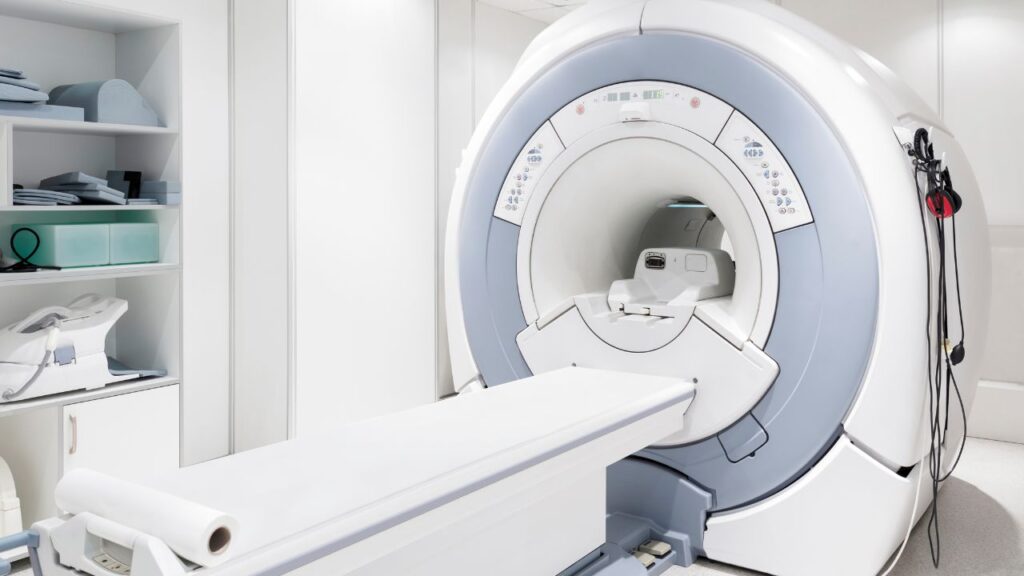
Magnetic resonance imaging (MRI) is a medical imaging technique that uses powerful magnets and radio waves to create detailed images of the body’s internal structures. Since its development in the 1970s, MRI has revolutionized medical imaging and diagnosis, providing doctors with a non-invasive and highly accurate tool for diagnosing a wide range of conditions.
MRI works by using powerful magnets to align the protons in the body’s tissues, and then using radio waves to cause these protons to emit signals that are picked up by the MRI machine. These signals are then used to create detailed images of the body’s internal structures, including the brain, spinal cord, and internal organs.
The development of MRI has had a profound impact on medical diagnosis and treatment. It allows doctors to see inside the body without the need for invasive procedures like surgery, and provides highly detailed images that can reveal even subtle abnormalities or changes in the body’s tissues.
MRI is used to diagnose a wide range of conditions, from brain tumors and spinal cord injuries to joint problems and cardiovascular disease. It is also used to guide the treatment of these conditions, allowing doctors to plan and monitor surgical procedures or radiation therapy.
One of the most important benefits of MRI is its ability to detect diseases and conditions at an early stage, when they are most treatable. MRI can detect tumors and other abnormalities long before they cause symptoms, allowing doctors to intervene and begin treatment before the disease has a chance to progress.
Despite its many benefits, MRI has some limitations and risks. The strong magnetic fields used in MRI can be dangerous for people with certain types of metal implants, and the procedure can be expensive and time-consuming. However, these risks are generally outweighed by the benefits of MRI in diagnosing and treating a wide range of medical conditions.
In conclusion, the development of magnetic resonance imaging (MRI) has transformed medical imaging and diagnosis, providing doctors with a non-invasive and highly accurate tool for diagnosing and treating a wide range of conditions. MRI allows doctors to see inside the body without the need for invasive procedures, and provides highly detailed images that can reveal even subtle abnormalities or changes in the body’s tissues. Despite its limitations and risks, MRI remains an essential tool in modern medicine, and has the potential to improve patient outcomes and save lives.
Universal Gravitation – Isaac Newton’s theory of universal gravitation explained the motion of celestial bodies and revolutionized our understanding of astronomy
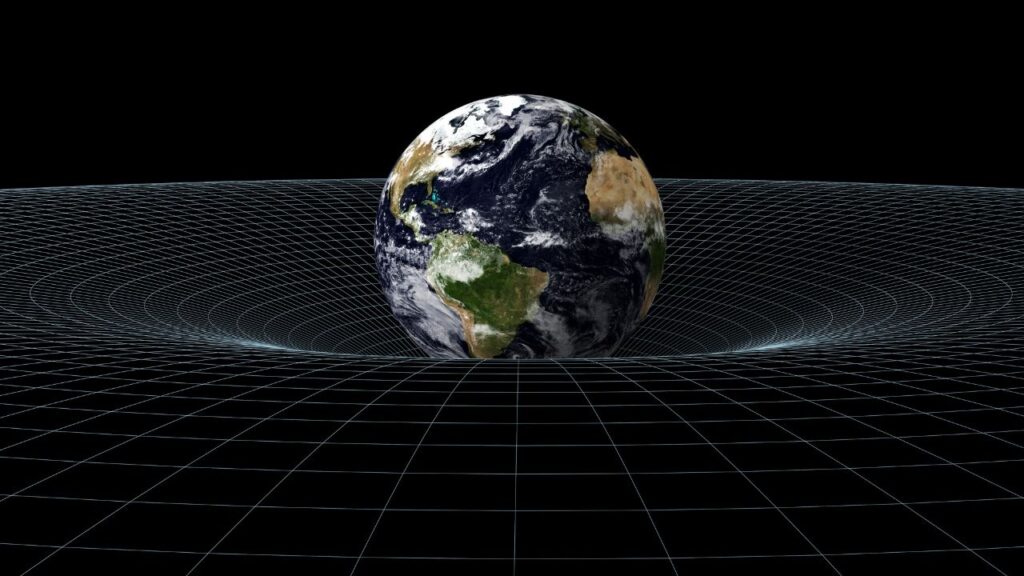
Isaac Newton’s theory of universal gravitation is one of the most important and fundamental concepts in the field of astronomy. It explains how all objects in the universe are attracted to each other, and provides a framework for understanding the motion of celestial bodies.
Newton’s theory of universal gravitation, published in his book “Mathematical Principles of Natural Philosophy” in 1687, states that every object in the universe is attracted to every other object by a force called gravity. The strength of this force is proportional to the mass of the objects and inversely proportional to the square of the distance between them.
This theory explained many of the observed phenomena in astronomy, including the motion of the planets around the sun, the orbits of comets, and the behavior of the moons of Jupiter. It also provided a theoretical foundation for the laws of motion that Newton had developed earlier, and helped to establish the field of classical mechanics.
Newton’s theory of universal gravitation revolutionized our understanding of astronomy, providing a unifying framework for understanding the motion of celestial bodies. It allowed astronomers to make more accurate predictions about the behavior of planets and other objects in the solar system, and laid the foundation for many of the discoveries that followed.
Today, the theory of universal gravitation remains an essential tool in the study of astronomy, guiding research and discovery in a wide range of applications. It has important implications for many fields of science, from the study of black holes and other exotic objects to the exploration of the origins of the universe itself.
In conclusion, Isaac Newton’s theory of universal gravitation explained the motion of celestial bodies and revolutionized our understanding of astronomy. The theory provides a unifying framework for understanding the behavior of planets, comets, and other objects in the solar system, and has important implications for many fields of science. Today, the theory of universal gravitation remains an essential tool in the study of astronomy, guiding research and discovery in a wide range of applications.
The Big Bang – The discovery of the Big Bang theory explained the origins of the universe and led to many modern cosmological theories

The Big Bang theory is the prevailing cosmological model for the observable universe, explaining how the universe began and evolved over billions of years. The theory states that the universe began as a singularity, an infinitely dense and hot point in space, and has been expanding and cooling ever since.
The Big Bang theory was first proposed in the early 20th century, based on observations of the expansion of the universe and the cosmic microwave background radiation. It was later refined with the discovery of cosmic microwave background radiation, a faint glow of radiation that fills the entire universe and provides evidence for the Big Bang.
The Big Bang theory has had a profound impact on our understanding of the universe and has led to many modern cosmological theories. It explains many of the observed phenomena in the universe, such as the cosmic microwave background radiation and the abundance of light elements, and has provided a framework for understanding the evolution of the universe.
One of the most important implications of the Big Bang theory is the concept of cosmic inflation, a period of rapid expansion of the universe that occurred shortly after the Big Bang. This period of rapid expansion explains many of the observed features of the universe, including its large-scale structure and the distribution of galaxies.
The Big Bang theory has also led to many important discoveries and advances in our understanding of the universe. It has provided a framework for the study of the origins and evolution of the universe, and has led to the development of many new technologies and observational techniques, including the Hubble Space Telescope and the Large Hadron Collider.
Despite its many successes, the Big Bang theory is not without controversy and open questions. Some physicists have proposed alternative theories, such as the steady-state theory or the cyclic model, which seek to explain the origins and evolution of the universe in different ways.
In conclusion, the discovery of the Big Bang theory explained the origins of the universe and led to many modern cosmological theories. The theory has had a profound impact on our understanding of the universe, providing a framework for the study of its origins and evolution. Despite ongoing debate and open questions, the Big Bang theory remains the prevailing cosmological model for the observable universe, guiding research and discovery in the field of cosmology.
Genetics – The study of genetics has led to many advances in medicine, agriculture, and biotechnology

Genetics is the study of genes, heredity, and variation in living organisms. The field of genetics has had a profound impact on our understanding of biology and has led to many important discoveries and advances in medicine, agriculture, and biotechnology.
The study of genetics began in the 19th century, with the work of Gregor Mendel, who discovered the principles of inheritance and the basic laws of genetics. Since then, advances in molecular biology and biotechnology have revolutionized our understanding of genetics and allowed us to study genes and their functions in much greater detail.
One of the most important applications of genetics is in the field of medicine. The study of genetics has helped us to understand the genetic basis of many diseases, from cystic fibrosis and sickle cell anemia to cancer and Alzheimer’s disease. This understanding has led to the development of many new diagnostic tests and treatments for these conditions, including targeted therapies and gene therapies.
Genetics has also had a significant impact on agriculture, allowing us to breed crops and livestock for specific traits and to increase food production. The study of genetics has helped us to develop crops that are more resistant to pests and diseases, that have improved nutritional profiles, and that can be grown in a wider range of environments.
In biotechnology, genetics has been instrumental in the development of new drugs, vaccines, and other medical treatments. It has also led to the development of new technologies, such as genetic engineering and gene editing, which have the potential to transform many fields of science and medicine.
Despite the many benefits of genetics, the field is not without controversy and ethical concerns. Issues like genetic testing and genetic modification raise questions about privacy, informed consent, and the potential unintended consequences of manipulating genes.
In conclusion, the study of genetics has led to many advances in medicine, agriculture, and biotechnology. The field has revolutionized our understanding of genes and their functions, and has provided us with important tools and techniques for understanding and manipulating genes. Despite ongoing ethical debates and concerns, genetics remains an essential field of study with the potential to improve human health and well-being.
Green Revolution – The development of new agricultural technologies and crop varieties led to the Green Revolution, which transformed global food production

The Green Revolution refers to a period of rapid agricultural development and increased food production that occurred in the mid-20th century. The Green Revolution was made possible by the development of new agricultural technologies and crop varieties, which allowed farmers to produce more food using less land, water, and labor.
The Green Revolution began in the 1940s and 1950s, when scientists developed new crop varieties that were more productive and resistant to pests and diseases. These new crop varieties were then combined with new farming techniques, such as the use of fertilizers and irrigation, to increase yields and improve efficiency.
The Green Revolution had a profound impact on global food production, helping to alleviate hunger and improve the standard of living for millions of people around the world. It also had important environmental implications, as it allowed farmers to produce more food on less land, reducing pressure on natural ecosystems.
One of the most important developments of the Green Revolution was the introduction of high-yielding wheat and rice varieties. These new varieties were more productive and resistant to pests and diseases, and helped to increase food production in countries like India and Mexico, which had struggled with food shortages and famine.
The Green Revolution also led to the development of new farming techniques and technologies, such as precision agriculture and genetically modified crops, which continue to improve food production and efficiency today. These new technologies have allowed farmers to produce more food using fewer resources, reducing the environmental impact of agriculture and helping to ensure food security for future generations.
Despite its many successes, the Green Revolution has also faced criticism and controversy. Some have argued that the focus on high-yielding crop varieties and intensive farming techniques has led to environmental degradation and the loss of biodiversity. Others have pointed out that the benefits of the Green Revolution have not been evenly distributed, with some farmers and regions benefiting more than others.
In conclusion, the development of new agricultural technologies and crop varieties led to the Green Revolution, which transformed global food production. The Green Revolution had a profound impact on global food security, helping to alleviate hunger and improve the standard of living for millions of people around the world. Despite ongoing controversy and criticism, the Green Revolution remains an important chapter in the history of agriculture and a powerful example of the potential of science and technology to improve human well-being.
Artificial Intelligence – The development of artificial intelligence and machine learning is transforming many fields, from finance to medicine to transportation

Artificial intelligence (AI) is the development of computer systems that can perform tasks that normally require human intelligence, such as learning, reasoning, and problem-solving. Machine learning, a subset of AI, allows computer systems to improve their performance on a task by learning from data and experience.
The development of AI and machine learning has had a profound impact on many fields, transforming the way we work, learn, and interact with technology. In finance, AI and machine learning are being used to develop new investment strategies, detect fraud and money laundering, and improve customer service and support.
In medicine, AI and machine learning are being used to develop new diagnostic tools and treatments, improve patient outcomes, and reduce healthcare costs. AI-powered systems can analyze large amounts of medical data and identify patterns and insights that would be difficult for humans to detect.
In transportation, AI and machine learning are being used to develop self-driving cars and other autonomous vehicles, improving safety and efficiency on the roads. AI-powered systems can analyze traffic patterns and optimize routes in real-time, reducing congestion and travel time.
The impact of AI and machine learning is not limited to these fields alone. It has the potential to transform many other areas, such as education, manufacturing, and even art and entertainment.
Despite its many benefits, the development of AI and machine learning also raises important ethical concerns. Issues such as data privacy, bias in decision-making, and the potential impact on employment and the workforce are all important considerations for the responsible development and use of AI and machine learning technologies.
In conclusion, the development of artificial intelligence and machine learning is transforming many fields, from finance to medicine to transportation. The potential of these technologies to improve efficiency, safety, and outcomes is immense, but it is important to approach their development and use with caution and consideration for the potential ethical implications. As AI and machine learning continue to evolve and improve, they have the potential to shape the future of many industries and aspects of human life.
Climate Change – The discovery of anthropogenic climate change has transformed our understanding of the Earth’s environment and led to many efforts to reduce greenhouse gas emissions and combat global warming

Climate change refers to long-term changes in the Earth’s climate, including changes in temperature, precipitation patterns, and sea level. The discovery of anthropogenic, or human-caused, climate change has transformed our understanding of the Earth’s environment and has spurred efforts to reduce greenhouse gas emissions and mitigate the impacts of global warming.
The science behind climate change is based on decades of research and observation by scientists around the world. The main cause of climate change is the emission of greenhouse gases, such as carbon dioxide, methane, and nitrous oxide, which trap heat in the Earth’s atmosphere and cause the planet’s temperature to rise.
The effects of climate change are already being felt around the world, with rising temperatures, more frequent and severe weather events, and changes in ecosystems and wildlife populations. These impacts are expected to worsen in the coming decades if greenhouse gas emissions continue to rise unchecked.
Efforts to combat climate change and reduce greenhouse gas emissions have taken many forms. Governments around the world have implemented policies and regulations to reduce emissions, such as carbon pricing and renewable energy targets. Many businesses have also taken steps to reduce their carbon footprint, such as investing in renewable energy and reducing waste and emissions in their operations.
Individuals can also take action to reduce their carbon footprint and contribute to the fight against climate change. This can include simple actions such as using energy-efficient appliances and reducing meat consumption, as well as more involved actions such as driving less or using public transportation.
While the fight against climate change is ongoing, there have been many encouraging developments in recent years. The cost of renewable energy has fallen dramatically, making it increasingly competitive with fossil fuels. Many countries and businesses have set ambitious targets to reduce emissions and transition to a low-carbon economy.
In conclusion, the discovery of anthropogenic climate change has transformed our understanding of the Earth’s environment and has spurred many efforts to reduce greenhouse gas emissions and combat global warming. While the challenges of climate change are significant, there are many reasons for optimism, including the falling cost of renewable energy and the growing awareness and action on the part of individuals, businesses, and governments around the world. By working together and taking action, we can build a more sustainable and resilient future for ourselves and for future generations.
Conclusion
Science has played a critical role in shaping the world we live in today. Each of the 20 scientific discoveries we have explored in this article has revolutionized our understanding of the universe and transformed the way we live our lives. From the development of antibiotics to the study of genetics, these discoveries have had a profound impact on medicine, agriculture, biotechnology, and many other fields. As we continue to push the boundaries of science, who knows what discoveries will shape our future?
Keywords
- Heliocentrism: The theory that the sun is at the center of the solar system.
- Isaac Newton: An English physicist and mathematician who developed the laws of motion and universal gravitation.
- Evolution: The process by which living organisms change over time.
- Germ Theory: The theory that diseases are caused by microorganisms such as bacteria and viruses.
- Quantum Mechanics: The branch of physics that studies the behavior of particles at the atomic and subatomic level.
- Electricity: The flow of electric charge through a conductor.
- Relativity: The theory of Albert Einstein that explains the behavior of objects in motion.
- DNA: The molecule that contains genetic information in living organisms.
- Periodic Table: A table that organizes the elements according to their atomic structure and chemical properties.
- Penicillin: An antibiotic drug that is effective against many types of bacteria.
- Plate Tectonics: The theory that explains the movement of the Earth’s crust and the formation of continents and oceans.
- Atomic Bomb: A weapon that uses nuclear reactions to release a large amount of energy.
- Vaccination: The process of administering a vaccine to stimulate the body’s immune system against a specific disease.
- MRI: Magnetic resonance imaging, a medical imaging technique that uses magnetic fields and radio waves to produce images of the body’s internal structures.
- Universal Gravitation: The theory that explains the gravitational attraction between objects in the universe.
- Big Bang: The theory that the universe began with a massive explosion around 14 billion years ago.
- Genetics: The study of heredity and the variation of inherited traits in living organisms.
- Green Revolution: A period of agricultural development in the mid-20th century that led to increased food production.
- Artificial Intelligence: The development of computer systems that can perform tasks that require human intelligence.
- Climate Change: Long-term changes in the Earth’s climate, including rising temperatures and changes in precipitation patterns.
- Solar System: The collection of planets, moons, and other objects that orbit around the sun.
- Gravity: The force that attracts objects with mass to each other.
- Energy: The ability to do work or cause change.
- Newton’s Laws: Three fundamental laws that describe the behavior of objects in motion.
- Theory of Evolution: The scientific theory that explains how living organisms change over time through the process of natural selection.
- Microorganisms: Tiny living organisms that are too small to be seen with the naked eye.
- Subatomic Particles: The particles that make up atoms, such as protons, neutrons, and electrons.
- Electromagnetic Radiation: Energy that travels through space as waves, such as light and radio waves.
- Space-Time: The four-dimensional continuum that combines the concepts of space and time.
- Double Helix: The twisted ladder shape of DNA.
- Chemical Elements: The basic building blocks of matter, such as hydrogen, oxygen, and carbon.
- Antibiotics: Drugs that are used to treat bacterial infections.
- Continental Drift: The gradual movement of the Earth’s continents over time.
- Nuclear Energy: The energy that is released by nuclear reactions.
- Immune System: The body’s defense against disease and infection.
- Diagnostic Tools: Medical tools used to diagnose and treat diseases and conditions.
- Renewable Energy: Energy sources that can be replenished naturally, such as solar and wind power.
- Precision Agriculture: Farming techniques that use technology to optimize crop yields and efficiency.
- Autonomous Vehicles: Vehicles that can operate without human intervention, such as self-driving cars.
- Anthropogenic: Caused or produced by human activity.
- Greenhouse Gas: A gas that contributes to the greenhouse effect, such as carbon dioxide or methane.
- Global Warming: The long-term trend of rising temperatures on Earth, primarily caused by human activity.
- Climate: The long-term pattern of weather in a particular area or region.
- Solar Radiation: Energy from the sun that is emitted as electromagnetic radiation.
- Kinetic Energy: The energy of an object in motion.
- Thermodynamics: The branch of physics that studies the relationship between heat, energy, and work.
- Mutation: A change in the genetic material of an organism.
- Chemical Bond: The force that holds atoms together in a molecule.
- Fossil Fuels: Non-renewable energy sources such as coal, oil, and natural gas.
- Gene: A segment of DNA that codes for a particular trait or function.
- Green Energy: Energy sources that are environmentally friendly and sustainable, such as wind and solar power.
- Ecosystem: A community of living and non-living things in a particular environment.
- Solar Power: Energy from the sun that is harnessed and converted into electricity.
- Photosynthesis: The process by which plants convert sunlight into energy and produce oxygen.
- Non-Renewable Energy: Energy sources that cannot be replenished, such as fossil fuels.
- Robotics: The development and use of robots in industry and other fields.
- Biotechnology: The use of living organisms or their products to create useful products or processes.
- Cybersecurity: The protection of computer systems and networks from unauthorized access or attack.
- Alternative Energy: Energy sources that are not based on fossil fuels, such as wind, solar, and hydropower.
- Nuclear Power: Energy produced by nuclear reactions, often used to generate electricity.
- Natural Selection: The process by which traits that are beneficial to survival and reproduction become more common in a population over time.
- Photosphere: The outermost layer of the sun’s atmosphere that emits visible light.
- Black Hole: An area of space where gravity is so strong that nothing, not even light, can escape.
- Exoplanet: A planet that orbits a star other than our sun.
- Dark Matter: A hypothetical form of matter that does not interact with light and cannot be directly observed.
- Galaxies: Large collections of stars, gas, and dust held together by gravity.
- Gravitational Waves: Ripples in the fabric of space-time caused by the movement of massive objects.
- Quantum Entanglement: A phenomenon where two particles become linked in such a way that the state of one particle affects the state of the other, regardless of distance.
- Nanotechnology: The development and use of materials and devices on the scale of nanometers.
- Genome: The complete set of genetic material in an organism.
- Stem Cells: Undifferentiated cells that have the potential to develop into many different types of cells in the body.
- Neuroplasticity: The ability of the brain to adapt and change throughout a person’s lifetime.
- Precision Medicine: Medical treatments that are tailored to an individual’s genetic and other unique characteristics.
- Synthetic Biology: The design and construction of new biological systems or parts that do not exist in nature.
- Virtual Reality: A computer-generated simulation of a three-dimensional environment that can be interacted with.
- Augmented Reality: A technology that overlays digital information onto the real world.
- Machine Learning: A subset of artificial intelligence that enables computer systems to learn and make predictions based on data without being explicitly programmed.
- Quantum Computing: The use of quantum mechanics to perform computations and solve problems faster than traditional computers.
- Cyber-Physical Systems: Integrated systems that combine physical and digital components to interact with each other and their environment.
- Internet of Things (IoT): The network of physical objects, devices, vehicles, buildings, and other items that are embedded with electronics, sensors, and software, and are connected to the internet.
- Blockchain: A decentralized, digital ledger that records transactions securely and transparently.
- Cryptocurrency: A digital or virtual currency that uses cryptography for security and operates independently of a central bank.
- Biomechanics: The study of the mechanical principles of living organisms and their movement.
- Smart Grid: An electricity grid that uses digital communication technology to detect and respond to changes in supply and demand.
- Wearable Technology: Devices that can be worn on the body, such as smartwatches and fitness trackers, that can collect and transmit data.
- Cloud Computing: The delivery of computing services, including servers, storage, databases, and software, over the internet.
- 3D Printing: The process of creating a physical object from a digital model by building up layers of material.
- Autonomous Systems: Systems that can operate independently without human intervention, such as drones and robots.
- Synthetic Intelligence: Artificial intelligence systems that can mimic human thought and decision-making.
- Quantum Cryptography: A secure communication method that uses quantum mechanics to generate and transmit cryptographic keys.
- Cyberwarfare: The use of computer technology to launch attacks on other nations or organizations.
- Machine Vision: The ability of computer systems to interpret and understand visual information from the environment.
- Brain-Computer Interfaces: Devices that allow the brain to communicate directly with a computer or other electronic device.
- Personalized Nutrition: Nutrition plans that are tailored to an individual’s genetic and other unique characteristics.
- Precision Agriculture: Farming techniques that use technology to optimize crop yields and efficiency.
- Artificial Photosynthesis: The development of technology that uses sunlight to convert carbon dioxide into fuel or other useful chemicals.
- Carbon Capture: The process of capturing and storing carbon dioxide from industrial processes to reduce greenhouse gas emissions.
- Virtual Assistants: Software that can perform tasks or provide information for users, such as Apple’s Siri or Amazon’s Alexa.
- Robotics Process Automation: The use of software to automate repetitive tasks and improve efficiency in business processes.
- Human Augmentation: The use of technology to enhance human abilities, such as prosthetic limbs or neural implants.











0 Comments